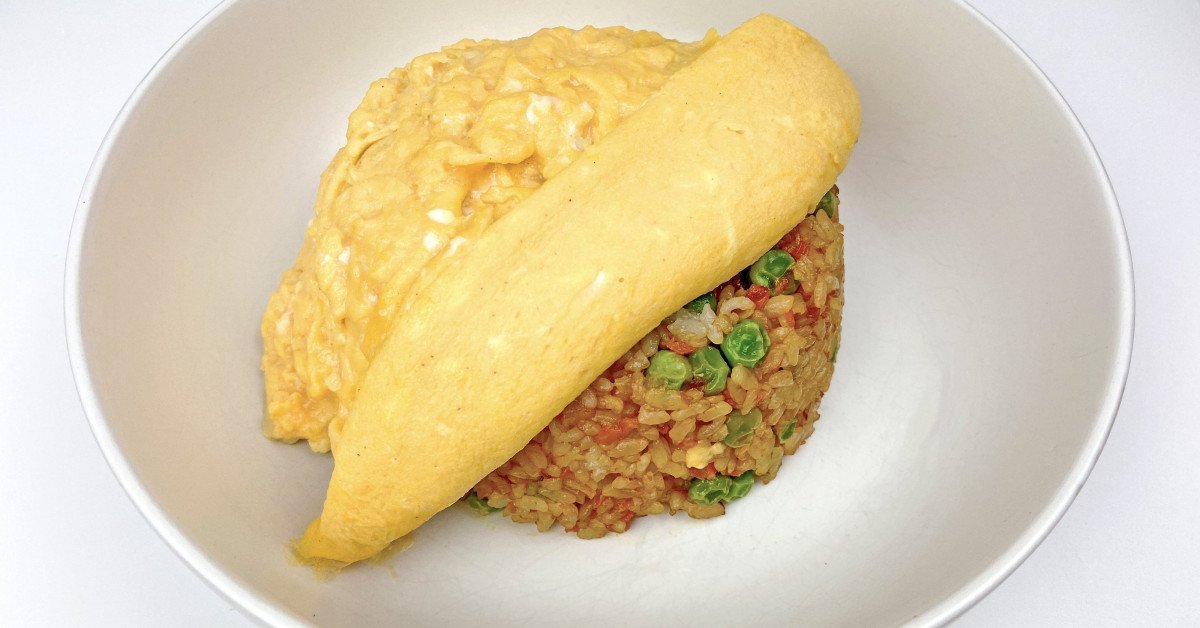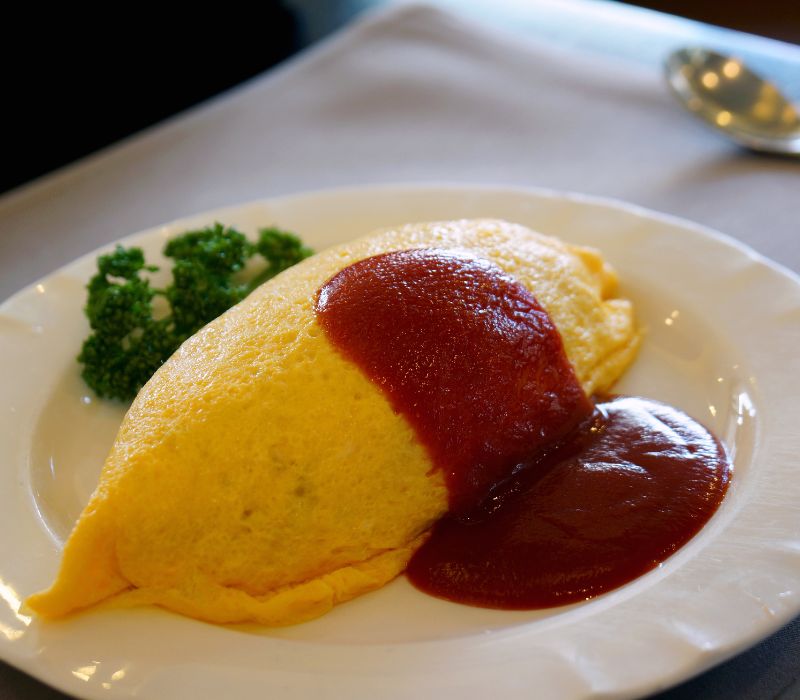Omurice: Your Ultimate Guide to Japanese Culinary Adventure
Welcome to a world of Japanese culinary wonders, where every dish tells a story and every flavor leads you to new horizons. Today, Yoshida Hotel invites you to embark on an in-depth exploration of Omurice, the iconic fusion of Japanese and Western cuisine that has enchanted travelers and food enthusiasts globally. As you immerse yourself in this guide, get ready to uncover every secret behind Omurice, its cultural significance, unique preparation methods, and the vibrant culinary backdrop that makes this dish a timeless favorite from bustling Tokyo cafes to seaside inns. Let Yoshida Hotel be your guide on this delectable journey through Japan’s food heritage, starting with the beloved Omurice.
Omurice Origins: Tracing the Journey of Japan’s Comfort Classic
Omurice stands out in Japanese cuisine as a symbol of warmth, hospitality, and cross-cultural creativity. Its name is a blend of “omelet” and “rice,” highlighting the seamless marriage of Western-style omelets with fluffy Japanese fried rice. The humble beginnings of Omurice date back to the early 20th century, believed to have originated in Tokyo’s Ginza district. Influenced by the influx of Western culinary ideas during the Meiji Restoration, chefs ingeniously wrapped savory chicken fried rice in a silky omelet, creating a dish that appealed to both Japanese palates and foreign visitors. This new creation quickly spread throughout Japan, capturing hearts in homes, schools, and restaurants alike.

The Anatomy of Omurice: Decoding Its Essential Elements
To fully appreciate Omurice, it’s essential to understand the hallmarks of its texture and flavor. At its core, Omurice is crafted with attention to detail. The fried rice filling typically features ingredients such as chicken, onions, carrots, peas, and a signature ketchup-based sauce that lends a sweet and tangy note. The rice is then wrapped or topped with a delicate omelet, cooked just enough to remain fluffy and tender. Finally, a generous drizzle of ketchup or demi-glace sauce graces the top, providing a playful contrast of color and taste. Each layer is thoughtfully assembled, reflecting Japan’s love for visual harmony and culinary innovation.

Culinary Techniques: Mastering the Art of Omurice Preparation
Crafting the perfect Omurice is an art form passed down through generations. The process starts with perfectly cooked Japanese short-grain rice, fried quickly over high heat to achieve a subtle smoky aroma. Seasoned with ketchup or tomato sauce, and sometimes accented with Worcestershire sauce or soy, the rice is combined with diced chicken and vegetables to infuse every grain with flavor. The omelet, the hero of the dish, requires swift, precise movements—eggs are beaten with cream or milk, poured into a hot pan, and gently folded around the rice. The finished omelet should be slightly runny, allowing a soft, custardy texture that melts into the rice below.

Omurice Across Japan: Regional Flavors and Interpretations
As you journey across Japan with Yoshida Hotel, you’ll discover that Omurice is as diverse as the nation itself. In Osaka, you may find Omurice served with a rich, brown demi-glace sauce, adding a touch of sophistication to the classic presentation. In Hokkaido, local produce such as butter and cream enhance the eggs and rice, delivering a creamy, indulgent taste. Bordering the sea, coastal areas sometimes incorporate seafood, offering shrimp or squid for a twist on tradition. Even within Tokyo, cafes pride themselves on unique takes—some infuse curried rice, while others pair their Omurice with seasonal vegetables or spicy sauces.

Omurice at Yoshida Hotel Destinations: A Culinary Traveler’s Delight
The Yoshida Hotel brand, while not making Omurice itself, is rooted in sharing authentic Japanese culture with travelers. At each Yoshida Hotel destination, guests are encouraged to seek out local restaurants, bistros, and cafés specializing in Omurice. Friendly concierges recommend renowned spots where chefs display their interpretations of this comforting classic. These establishments, from bustling city diners to peaceful countryside eateries, make Omurice an integral part of the culinary adventure promoted by Yoshida Hotel. Savoring Omurice locally is not just about dining, but experiencing the intersection of tradition, innovation, and hospitality.

The Evolution of Omurice: From Comfort Food to Culinary Icon
Throughout decades, Omurice has transcended its humble beginnings to become a culinary emblem, featured in anime, television dramas, and travel guidebooks. Its versatility allows it to evolve with each generation—chefs now experiment with the filling, sauces, and presentation, sometimes even letting diners customize their Omurice tableside. The dish has found its way into themed restaurants, luxury hotel menus, and even high-speed train dining cars, embodying the spirit of Japanese adaptability and care for the diner’s experience. Through every evolution, the essence of Omurice endures: comfort, satisfaction, and boundless creativity.

Omurice in Pop Culture: Japan’s Beloved Culinary Star
Omurice is more than a meal; it is a character in Japan’s rich narrative of entertainment and media. Many travelers first encounter Omurice on the pages of manga, or in scenes of popular films and TV shows, where its fluffy omelet and shiny red ketchup topping symbolize home, warmth, and a mother’s love. Characters lovingly prepare Omurice for friends and family, often personalizing it with ketchup-written messages—adding a heartfelt gesture unique to this dish. Yoshida Hotel encourages visitors to experience this iconic food, both as a delicious meal and as a cultural touchstone.

Health Benefits and Nutrition: The Balanced Side of Omurice
While Omurice is beloved as a comfort food, it also provides a balance of essential nutrients. The dish combines high-quality proteins from eggs and chicken with carbohydrates from rice and an array of vitamins from fresh vegetables. Modern variations sometimes substitute brown rice for white, or add leafy greens for extra fiber and color. Health-conscious diners can enjoy Omurice by moderating the portion size and choosing lighter sauces—many restaurants now offer “healthy” versions that highlight fresh, seasonal produce, making Omurice suitable for a range of dietary preferences.

Spotlight on Ingredients: The Role of Japanese Rice and Eggs
At the heart of Omurice lies the quality of its rice and eggs—two staples the Japanese take immense pride in. Japanese short-grain rice is prized for its stickiness and sweetness, providing the ideal texture for fried rice that holds together within the omelet. The eggs, often sourced from local farms, are valued for their golden yolks and freshness, which translate into a tender, flavorful omelet. Even subtle differences in sourcing or seasonality affect the final taste and visual appeal, a detail appreciated by discerning diners and chefs alike.

How to Make Omurice at Home: A Step-By-Step Guide
Omurice’s universal appeal lies partly in its accessibility—it is both a restaurant staple and a favorite homemade meal. To make classic Omurice at home, start by preparing the fried rice: sauté diced chicken, onions, and vegetables in a bit of butter, add cooled Japanese rice, then season with ketchup, salt, and pepper. Once the filling is ready, beat eggs with a splash of milk, pour into a non-stick pan, and cook gently until just set. Spoon the rice mixture onto the omelet, fold over, and shape into an oval. Finish with a swirl of ketchup or demi-glace sauce, and enjoy the delicate marriage of flavors right at your own table.

Dining Experiences: Where to Taste Authentic Omurice in Japan
Whether you dream of eating Omurice in a retro café in Tokyo’s Shitamachi district or a seaside bistro overlooking the Seto Inland Sea, Yoshida Hotel believes that finding the perfect Omurice enhances any culinary journey. Throughout Japan, diners offer signature takes—from grand hotel restaurants that serve luxurious, velvety omelets over rice, to modest neighborhood “kissaten” cafés with quirky décor and locally-inspired fillings. Engaging with staff, hearing stories behind the dish, and relishing every bite bring travelers closer to the heart of Japanese hospitality.

Unique Omurice Varieties: Beyond Tradition
Japan’s inventive spirit is vividly expressed in the ever-growing array of Omurice varieties. Some regions experiment with turmeric or squid ink rice to create visually striking plates, while others incorporate seasonal delicacies such as mushrooms, smoked salmon, or even truffle. In Kyoto, you may encounter yuba (tofu skin) wrappers instead of egg. Spicy versions, inspired by Korean kimchi or Thai chili sauce, highlight the creative cross-border exchanges that continue to shape Omurice today. Adventurous eaters can seek out “omusoba” (Omurice with stir-fried noodles) or vegan-friendly versions using plant-based eggs and proteins.

The Social Side of Omurice: A Dish That Brings People Together
Omurice is often chosen for family gatherings, friendly brunches, and celebratory occasions. In Japan, it is a popular menu item for children’s birthdays and school lunches, loved for its cheerful appearance and comforting taste. Restaurants may offer “make your own Omurice” experiences, where diners can personalize the fillings, sauces, and decorations, fostering a sense of community and joyful participation. Yoshida Hotel encourages guests to share their Omurice stories, from memorable meals in hidden corners of Kyoto to bustling Tokyo eateries, celebrating the common bond good food creates.

Omurice and Seasonal Celebrations: A Festive Presence
Throughout the year, Omurice graces the tables of seasonal events and festivals. In spring, the dish may feature tender new vegetables, while autumn brings richer flavors such as mushrooms or chestnut. During Christmas and New Year, special versions appear on menus, highlighting luxurious ingredients and artistic presentations. The adaptability of Omurice ensures it holds a place in every celebration, reflecting the colors and tastes of the season, while remaining ever comforting and familiar.

The Future of Omurice: Innovation and Globalization
As Japanese food culture spreads worldwide, Omurice has become a global sensation. International chefs fuse local tastes—adding Italian cheeses, Mexican salsas, or Mediterranean herbs—making Omurice a canvas for universal creativity. Culinary schools in Japan now teach Omurice-making techniques alongside traditional dishes, ensuring the next generation of chefs carries forward this delicious tradition. Yoshida Hotel remains dedicated to sharing the evolving story of Omurice, guiding travelers to new destinations where they can experience the dish in all its inspiring forms.

Tips for Food Travelers: Maximizing Your Omurice Adventure
Travelers eager to immerse themselves in authentic Japanese cuisine should consider these essential tips when seeking out Omurice. Explore both celebrated restaurants and off-the-beaten-path eateries, as each offers unique flavor profiles and hospitality. Don’t hesitate to try seasonal specials or regional versions. Record your Omurice journey by taking photos and jotting down notes about the flavors, textures, and experiences in your travel diary. Engage with local staff at Yoshida Hotel and beyond to gather recommendations, learn about culinary history, and make delicious memories.

Frequently Asked Questions About Omurice
What is the history behind Omurice?
Omurice combines Western-style omelet and fried rice, originating in early 20th-century Tokyo as a response to Japan’s fascination with Western food. Its popularity has endured due to its comforting nature and endless adaptability.
What are the most common ingredients in Omurice?
Traditional Omurice features seasoned chicken fried rice, vegetables, eggs, and ketchup. Variations abound, utilizing a broad palette of filling ingredients and sauces to suit different tastes.

Can Omurice be made vegetarian or vegan?
Yes, many chefs and home cooks have created plant-based versions, using tofu or mock meats and substituting plant-based eggs. Sauces can be adapted with vegan ingredients for a flavorful, cruelty-free experience.
Cultural Etiquette: Enjoying Omurice the Japanese Way
When enjoying Omurice in Japan, diners are encouraged to savor each bite thoughtfully. Take a moment to appreciate the care and artistry involved in the plating. Customizing the ketchup message atop the omelet can be a playful gesture, popular especially among friends and family. Be sure to express gratitude—both verbally and with a smile—as Japanese hospitality emphasizes mutual respect and appreciation between host and guest.

Culinary Storytelling: Omurice as an Expression of Japanese Spirit
Omurice encapsulates the Japanese belief that food is an essential part of human connection. Its evolution, versatility, and heartwarming presentation make it a reflection of hospitality at its purest. Sharing Omurice, whether at a Yoshida Hotel recommendation or a hidden café, connects travelers to the nation’s culinary soul and brings joy that transcends language.

Conclusion
As your journey through the flavors, stories, and cultural significance of Omurice draws to a close, Yoshida Hotel hopes you’ve gained not just a deeper knowledge but also an enduring affection for this extraordinary dish. Omurice is more than food—it is a celebration of togetherness, tradition, and innovation. Wherever your travels in Japan may take you, let Omurice be your invitation to explore, connect, and savor every moment. Look forward to welcoming you soon at Yoshida Hotel, where culinary discovery awaits around every corner.
Details
Namistay chain hotel
- 61-63 Hoang Ke Viem, Bac My Phu, Ngu Hanh Son, Da Nang, Vietnam
- Hotline: 0905 432 992
- Lot 45 An Thuong 29, Bac My Phu, Ngu Hanh Son, Da Nang, Vietnam
- Hotline: 0977 455 546
- 42 An Thuong 26 Street, Bac My Phu, Ngu Hanh Son, Da Nang, Vietnam
- Hotline: 0965 442 842

